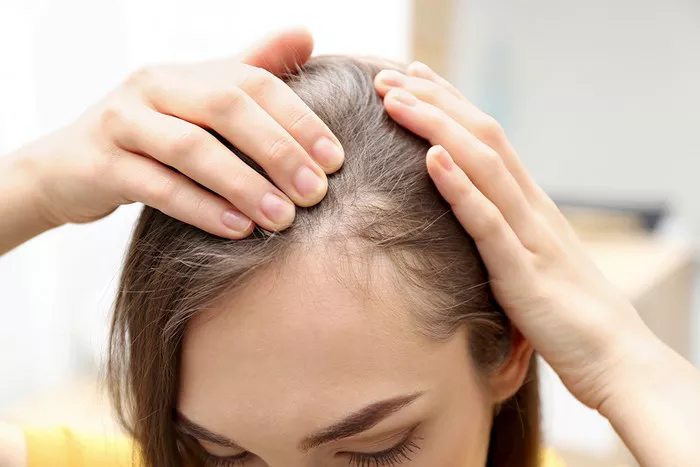Thinning hair at the temples can be a distressing concern for many individuals. The temples are a noticeable and prominent area, and changes in hair density in this region can affect one’s overall appearance. In this article, we delve into the various factors that contribute to thinning hair at the temples, offering insights into the causes and potential solutions for those grappling with this common issue.
Genetic Predisposition and Hormonal Changes
One significant factor contributing to thinning hair at the temples is genetic predisposition. Hereditary conditions, such as male and female pattern baldness, often manifest with hair loss around the temples. Hormonal changes, particularly the influence of dihydrotestosterone (DHT), play a crucial role in these genetic hair loss patterns. DHT can shrink hair follicles, leading to thinner and shorter hair, and the temples are particularly susceptible to these effects.
Aging and Reduced Hair Follicle Activity
As individuals age, the natural aging process can contribute to hair thinning, including at the temples. The activity of hair follicles diminishes over time, leading to a reduction in hair density. This age-related thinning is more pronounced in certain areas, such as the temples and crown, where the hair may become finer and more sparse.
Poor Scalp Health
The health of the scalp is paramount for maintaining robust hair growth. Issues such as a dry scalp, dandruff, or excess oil production can adversely affect hair follicles, leading to thinning at the temples. Maintaining a clean and well-hydrated scalp is essential for promoting a healthy environment for hair growth.
Traction Alopecia and Hairstyling Practices
Traction alopecia is a form of hair loss caused by tension or pulling on the hair. Certain tight hairstyles, such as ponytails, braids, or buns, can exert constant stress on the hair follicles around the temples, leading to thinning over time. Avoiding hairstyles that cause excessive pulling and opting for looser, gentler styles can help prevent traction alopecia and preserve hair density at the temples.
Nutritional Deficiencies
Nutritional deficiencies can also contribute to thinning hair, including at the temples. In particular, deficiencies in iron, zinc, vitamins A and D, and biotin can impact hair health. Ensuring a balanced and nutrient-rich diet is crucial for supporting optimal hair growth. Consider incorporating foods rich in these essential nutrients or consult with a healthcare professional for dietary guidance.
Chronic Stress and Telogen Effluvium
Chronic stress is a significant contributor to various health issues, and hair loss is no exception. Stress-induced hair loss, known as telogen effluvium, can lead to diffuse thinning, including at the temples. Managing stress through relaxation techniques, mindfulness, and a healthy lifestyle can mitigate its impact on hair health.
Medical Conditions and Medications
Certain medical conditions and medications can contribute to thinning hair at the temples. Conditions such as thyroid disorders, autoimmune diseases, and hormonal imbalances may affect hair growth patterns. Additionally, some medications, including those used for cancer treatment, arthritis, and high blood pressure, can have hair loss as a side effect. Consulting with a healthcare professional can help identify underlying medical issues and explore alternative medications when possible.
Environmental Factors
Environmental factors, such as exposure to harsh weather conditions, pollution, and UV radiation, can impact hair health. Prolonged exposure to these elements without adequate protection may contribute to weakened hair strands and thinning, especially in vulnerable areas like the temples. Using protective measures like hats and hair products with UV filters can help safeguard hair from environmental damage.
Preventive Measures and Treatment Options
While addressing the root causes of thinning hair at the temples is essential, there are preventive measures and treatment options available. These include:
1. Topical Treatments: Over-the-counter topical treatments containing minoxidil can stimulate hair growth and may be effective in slowing down hair loss at the temples. Prescription medications like finasteride may also be recommended for certain cases.
2. Scalp Massage and Care: Regular scalp massages can enhance blood circulation and promote a healthy environment for hair growth. Using gentle, nourishing shampoos and conditioners can contribute to overall scalp health.
3. Haircare Practices: Adopting gentle haircare practices, including avoiding tight hairstyles and minimizing heat styling, can help reduce stress on the hair and prevent further thinning.
4. Nutritional Support: Ensuring a well-balanced diet rich in essential nutrients supports overall health, including hair health. Consider dietary supplements if necessary, but consult with a healthcare professional before making significant changes to your diet.
5. Consulting a Professional: For personalized guidance and treatment options, consulting with a dermatologist or trichologist is crucial. They can assess your specific condition, identify underlying causes, and recommend tailored solutions.
See Also: [Revealed!] The Miraculous Egg Remedy for Hair Loss
Conclusion
Thinning hair at the temples is a multifaceted issue with various contributing factors. Understanding the root causes, adopting preventive measures, and exploring suitable treatment options can help individuals address this concern effectively. Whether it’s genetic predisposition, lifestyle factors, or underlying medical conditions, taking a proactive approach to hair health can lead to positive outcomes and restored confidence.


